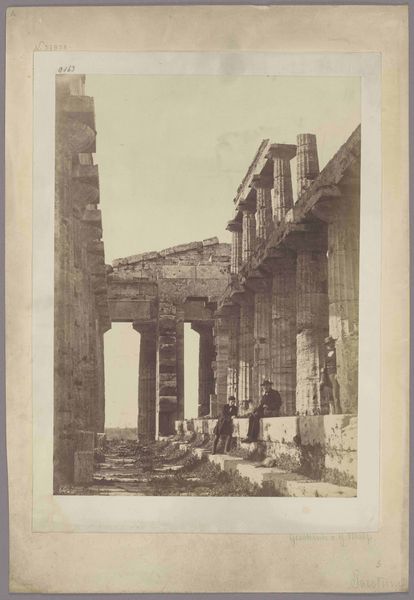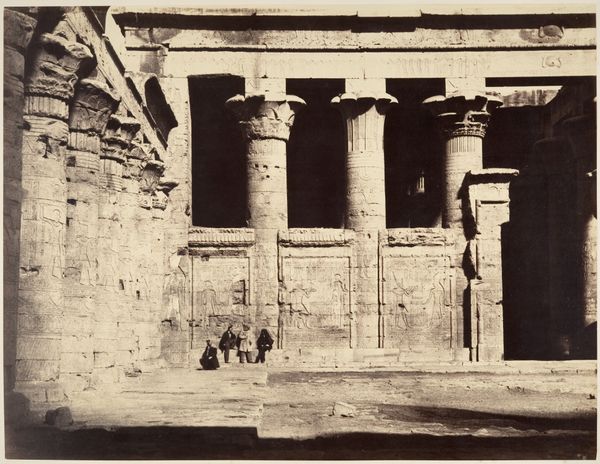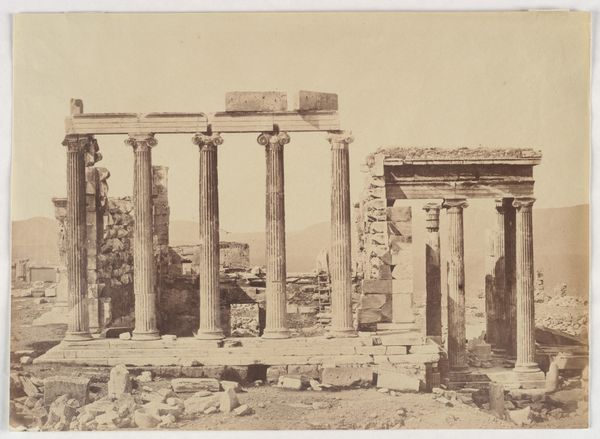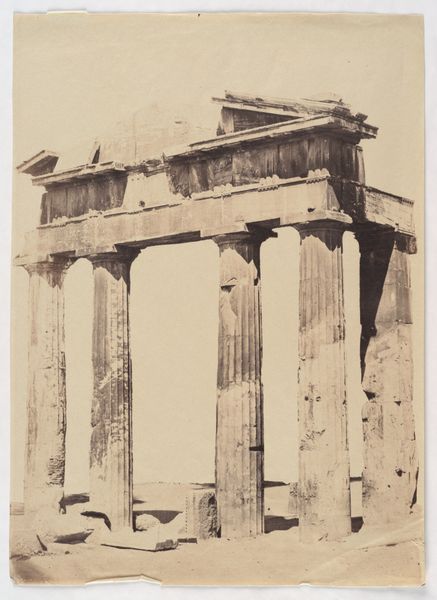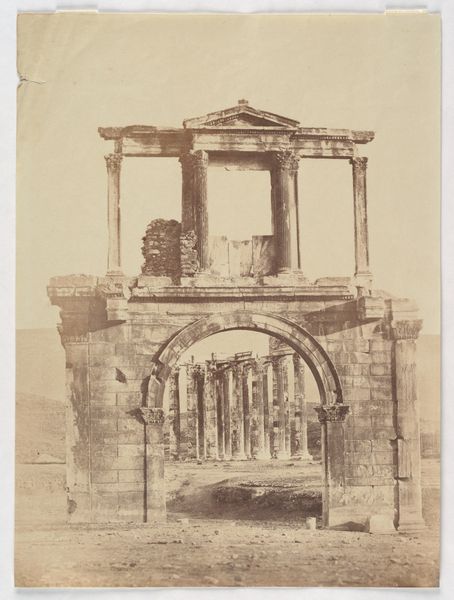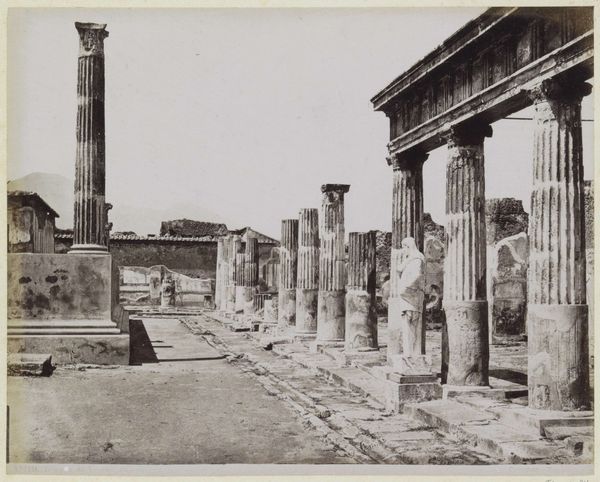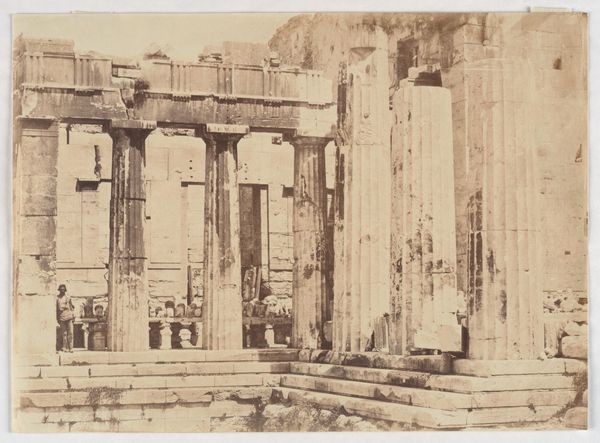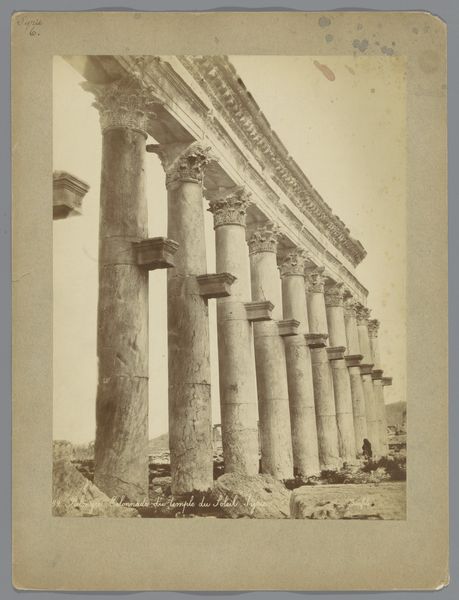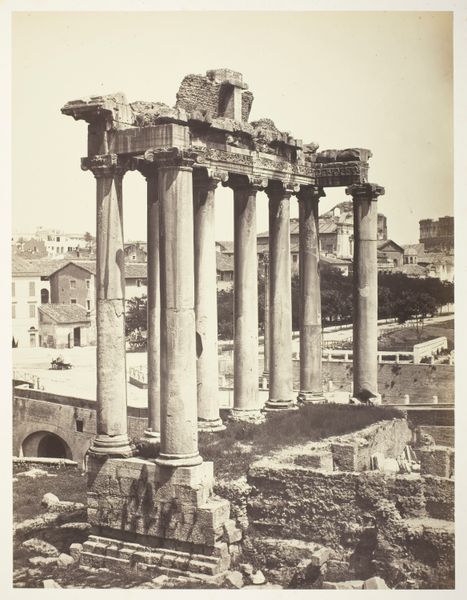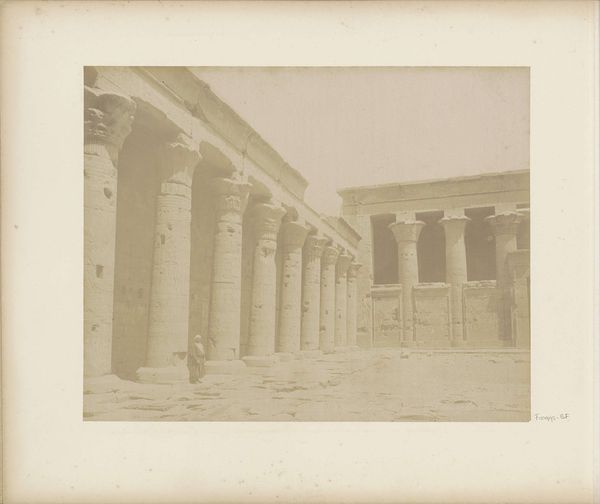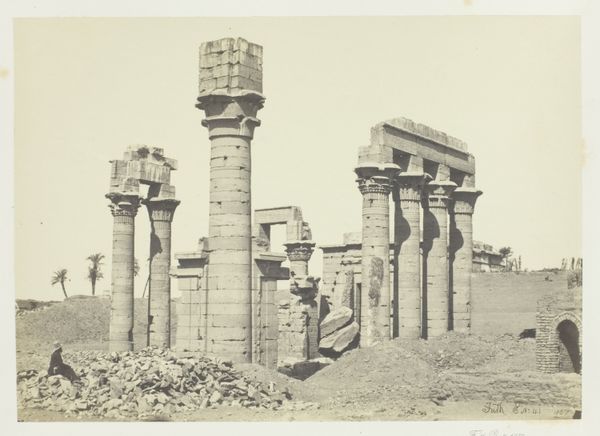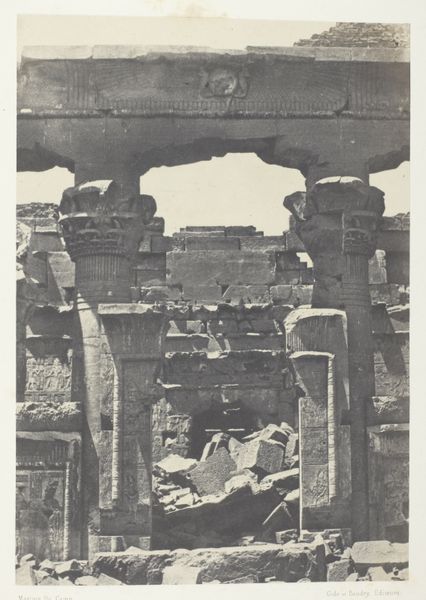
silver, print, photography
#
silver
# print
#
landscape
#
classical-realism
#
photography
#
romanesque
#
ancient-mediterranean
#
cityscape
#
history-painting
Dimensions: 37 × 28.2 cm (image/paper); 45.5 × 40.7 cm (mount)
Copyright: Public Domain
Curator: Alright, let's dive into this captivating photograph. It's titled "Roman Forum, Antonio and Faustina" and was captured around 1857 by Robert MacPherson, who worked with the silver print medium. Editor: Wow, instantly, I'm hit by the sheer scale of it all. These crumbling columns reaching for the sky... It feels weighty, melancholic even. Like looking at a faded memory. Curator: MacPherson's choice to frame the temple ruins in this way definitely evokes a sense of bygone grandeur, and the image becomes a powerful symbol for lost empires. What draws your eye particularly, in terms of the iconic symbolism at play here? Editor: For me, the juxtaposition of decay and enduring strength is key. You see those fluted columns, still standing after centuries? They speak of resilience, but also of the inevitable march of time. The Corinthian capitals, so ornate and classical, contrast sharply with the worn, pitted stone. It is the history etched in those surfaces! I also find it significant to think of it from a photographic perspective – an early way of capturing and, in essence, preserving this specific historical place. It has transformed its function and extended its "shelf life" almost indefinitely. Curator: Absolutely. And the location itself, the Roman Forum, adds layers of meaning. It was the heart of ancient Rome, the center of political, religious, and social life. To see it depicted as a ruin provokes contemplation of impermanence. MacPherson’s vantage point also includes glimpses of contemporary buildings interwoven with the classical structures; history never happens in a vacuum. Editor: It makes me wonder about the people who walked these streets, what they valued, how they lived. Buildings become vessels that store memories. MacPherson almost turns this into a palimpsest, doesn't he? Where layers of meaning accumulate and partially obscure each other. The classical structures have had time for different cultures to be imposed. How extraordinary that the building that stood to hold that kind of imprint also becomes the art to capture this for audiences now. Curator: It’s almost ghostly! This photograph transforms into something far beyond a simple representation. It becomes an artwork reflecting time itself. Well, thank you for sharing those thoughtful observations. Editor: My pleasure! It's been great to think of what all these cultural strata carry in a simple picture.
Comments
No comments
Be the first to comment and join the conversation on the ultimate creative platform.

